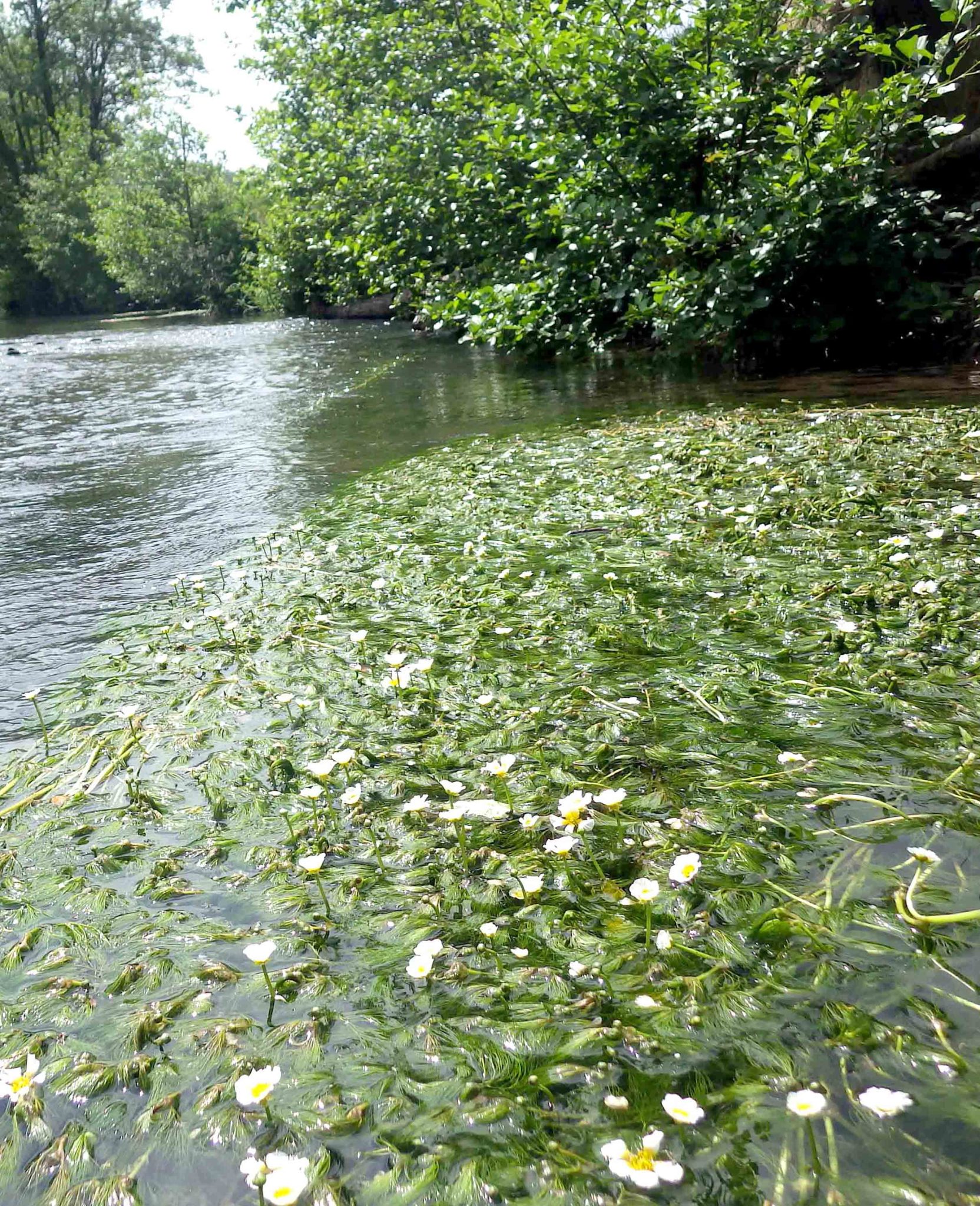
Nine rivers in Wales have been designated as Special Areas of Conservation because they make a significant contribution to conserving the habitats and species identified in Annexes I and II of the Habitats Directive. Such species include European otter and, below, important plants such as ranunculus Â

There are nine Special Areas of Conservation (SAC) rivers in Wales which have greater protection than the Water Framework Directive: the Wye; Usk; Dee; Glaslyn; Eden; Teifi; Cleddau; Tywi and Gwyrfai.
These rivers have been designated as SACs under the Conservation of Habitats and Species Regulations 2019 (previously the Habitats Directive [Council Directive 92/43/EEC]) and certain elements of the Wild Birds Directive (Directive 2009/147/EC), known as the Nature Directives.
Under these regulations, the UK Government and devolved administrations are required to establish a network of important, high-quality conservation sites that will make a significant contribution to conserving the habitats and species identified in Annexes I and II, respectively, of”¯European Council Directive 92/43/EEC”¯on the conservation of natural habitats and of wild fauna and flora, known as the Habitats Directive.”¯The listed habitat types and species are those considered to be most in need of conservation at a European level (excluding birds).
These rivers are designated for species and habitats of international importance. The designations vary by river and the detail can be found in the links below.
Joint Nature Conservation Committee (JNCC)
The Joint Nature Conservation Committee (more commonly known as JNCC) is the public body that advises the UK Government and devolved administrations on UK-wide and international nature conservation. Originally established under the Environmental Protection Act 1990, it was reconstituted by the”¯Natural Environment and Rural Communities (NERC) Act 2006. JNCC are responsible for setting the required SAC standards and targets to protect species and habitat.
JNCC will, as necessary, amend targets and standards as new science and research is reported to ensure that they provide the necessary level of protection. In Wales, NRW is the statutory body with the responsibility to monitor, evidence and apply these standards. It is also the responsible body for ensuring that actions are identified to maintain and improve the conditions status under the Regulations.
Information on the protected sites for Wales (including all other protections) can be found in the links below. This includes Core Management Plans for every SAC river in Wales. Such plans should provide the current evidence, status and actions for each river.Â
What are Afonydd Cymru’s concerns?
- Nearly every SAC river in Wales is failing its conservation objectives.
- All of our SAC rivers are in unfavourable condition status.
- In November 2022 we challenged NRW that we do not believe that Core Management Plans are fit for purpose (see below).
- We do not believe NRW currently has actions identified and in place to halt the decline of our rivers.
